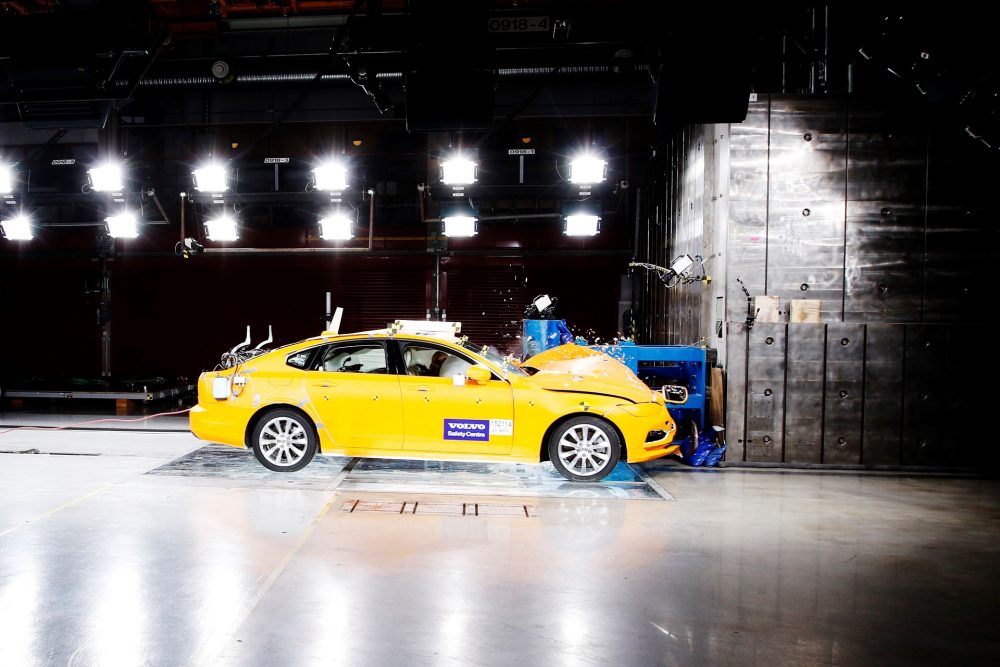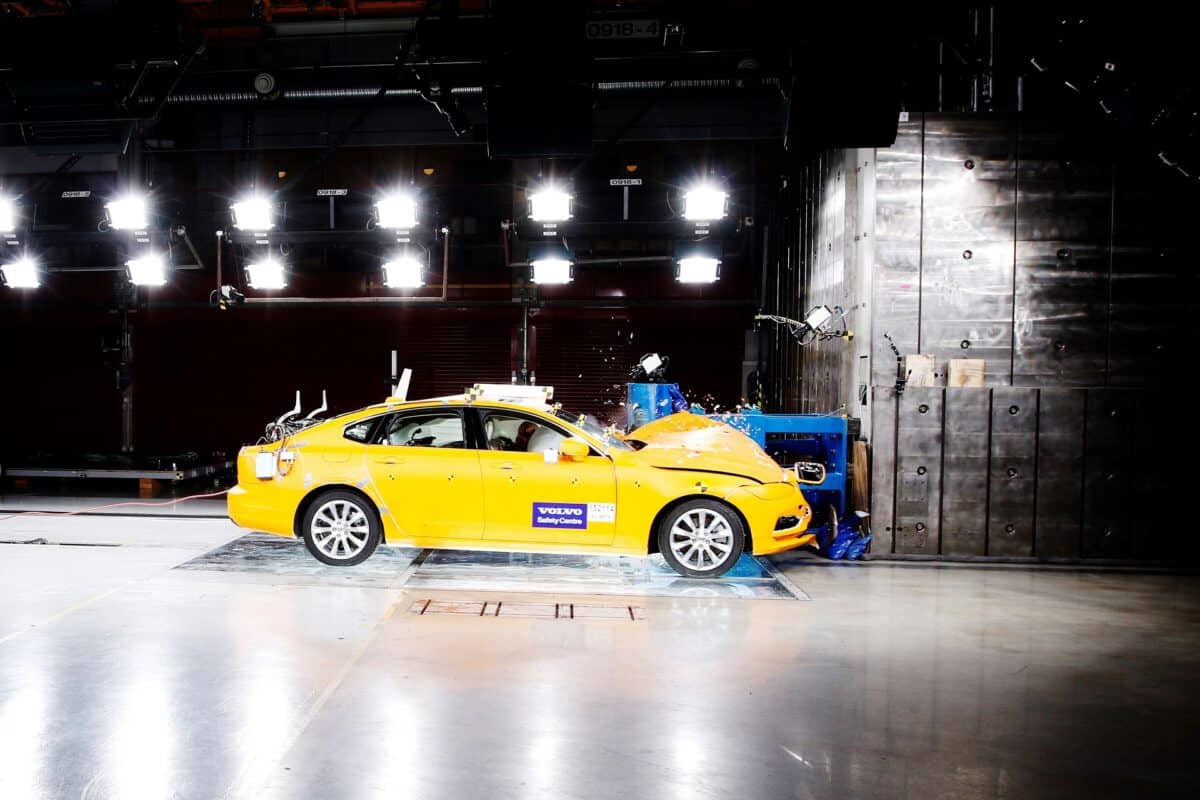
Volvo’s commitment to road safety is well documented, most recently due to the fact that it dropped multiple brand-new models from a crane 30 meters in the air in order to help train rescue workers in victim extraction. However, the automaker’s dedication to making the road better for everyone is most evident in the Volvo Cars Safety Centre, which recently celebrated its 20th anniversary.
Advanced in every way: The Volvo XC90
The Volvo Cars Safety Centre, which was founded in 2000 and officially opened by Carl XVI Gustaf — the King of Sweden — is an enormous, highly advanced crash lab designed to simulate and evaluate a borderline unfathomable variety of accident situations. The facility includes two tracks, which measure 108 and 154 meters, the shorter of which can be moved and rotated up to 90 degrees. According to Volvo, vehicles on these tracks can reach speeds of 120 km/h, or just shy of 75 mph.
That’s not all, though. Nearby there’s a room where, according to a recent press release, “there is room for performing tests like roll-over crashes and run-off road scenarios, whereby cars are launched into a ditch at high speeds.” While the practical application of these crashes mirrors that of the 30-meter drop test, I have to imagine that there’s a certain level of joy that comes from working your way up as an engineer and ultimately being able to add “I launch cars into a ditch at high speeds” to your resume.
While working at the Volvo Cars Safety Centre may sound like a nine-to-five delight of vehicular masochism, its core function is — and has always been — to save lives. Thomas Broberg, a leading safety engineer at the company with 20 years under his belt, phrased this idea well when he said, “For me it is very inspiring to realise that for every hour of testing and analysis we put in, we get closer and closer to our ambition that no one should be killed or seriously injured in a new Volvo.”
He also provided me with a fitting conclusion for this article when he — in my opinion, quite aptly — said, “Being committed to safety is not about passing a test or getting a safety rating. Our commitment to safety is about finding out how and why accidents and injuries occur and then developing the technology to help prevent them. We hope our pioneering work will inspire others to follow, our ambition to reduce road traffic casualties world wide.”
Stay safe out there: Trust certified service
The News Wheel is a digital auto magazine providing readers with a fresh perspective on the latest car news. We’re located in the heart of America (Dayton, Ohio) and our goal is to deliver an entertaining and informative perspective on what’s trending in the automotive world. See more articles from The News Wheel.










